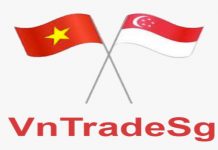 |
| Minister of Transport Nguyen Van The |
Construction sites have been bustling, especially in the second half of 2019 with a number of big transport projects either kicked off or resumed. What are the key project highlights for the next 12 months?
The transport sector entered the 2016-2020 period at a time when almost all big projects were about to be completed, while new ones were in the process of crafting investment proposals.
Some of these projects had their plans approved, but had yet to get their hands on official development assistance funding due to concerns over the public debt ceiling, or facing difficulties in credit access. Therefore, they had to alter their forms of investment.
These are the reasons why in the first two or three years of this period, few major transport infrastructure projects got underway.
In 2019, the Ministry of Transport (MoT) began construction on a number of important ventures after preparations were sped up and financial sources ensured. They include the two subprojects of the Eastern Cluster of the North-South Expressway using public investment during 2017-2020. This year, the ministry plans to kick off 18 transport projects with the total investment capital of around VND92.38 trillion ($4 million). They will include the aforementioned expressway project, and railway schemes subject to VND15 trillion ($652 million) worth of 2016-2020 public investment, as well as Terminal 3 of Tan Son Nhat International Airport.
I believe that 2020 will be not only an eventful year in construction sites, but also a promising year of improvements in funding mobilisation and disbursement in transport infrastructure projects.
The possibilities of arranging more public investment for the transport sector in 2020 is currently not that high. Amid state budget constraints, what possible solutions are there to attract investment for projects?
State funding for the transport sector is always lower than expected, and in 2020 there is a low possibility that it will receive more. Plus, state funding is even lower in the next period.
We are working with relevant ministries and agencies, especially the Ministry of Planning and Investment (MPI) on the draft Law on Public-Private Partnerships (PPP) so that the government can introduce it soon. We hope that with the many new regulations including the risk allocation and guarantee for investors, the new law on PPP will help the transport sector mobilise more financial resources, including investment from businesses and people via the construction bonds channel.
We are paying special attention to improving the quality of the road network, including expressways. By the end of last year, the country had nearly 25,000 kilometres of national highways. However, the road network is being urbanised because of a big density of roadside houses, thus limiting the maximally-acceptable speed, and people’s travelling, and thus causing risks to traffic safety.
We have made a list of expressway projects calling for private investment, and are preparing sufficient state funding to join with private investors in these projects. The MoT is planning to make this list available and launch investment promotional programmes to select investors in a transparent and fair manner. This is an optimal solution to increase efficiency of calling for private investment in transport projects, including the development of expressways.
Disbursement of public investment in transport infrastructure projects remained sluggish in 2019 with the disbursement rate just equal to that of the country’s average, while the transport sector gets the highest public investment. How can the transport sector improve the situation in the last year of the 2016-2020 period?
So far, we have had many gatherings to review the reasons and to sum up our experiences, as well as deployed a number of bold measures to speed up the disbursement of public investment in projects to serve social demands. Leaders of the MoT consider public investment disbursement as a key task, and for project management boards this is the No. 1 task. If they fail to meet the disbursement plan, the MoT will the punish leaders of these units.
In 2020, I think that the transport sector will have more advantages, especially when the policy and regulations on capital construction investment are significantly improved. An example of stagnancy is Tan Son Nhat’s third terminal – an urgent project slowed due to legal barriers on investor selection is proving how important clearing those barriers is to any venture. Therefore, the first important task in 2020 is to work closely with relevant ministries and agencies, especially the MPI, on the legislation.
The other important factor for the MoT is that in early 2020, the revised Law on Public Investment will take effect. This year, we will receive about VND35 trillion ($1.52 billion) worth of public investment in capital construction. With the new regulations, the MoT will have the right to adjust and allocate the capital to projects with good implementation progress.
Projects will have their capital cut or they will be allocated to more preferable investors if they see sluggish development. This mechanism will create a big breakthrough to not only help speed up disbursement rates but also improve the development process and efficiency of capital use in these initiatives.
The potential investors for the Long Thanh International Airport project and the eight PPP sections of the Eastern Cluster of the North-South Expressway are receiving strong attention from the business community. Will the selected investors be announced this year, and what are the opportunities for private investors?
The prime minister and his deputies are giving directions on this issue. At present, we have reported to the prime minister the detailed development plan of the Long Thanh International Airport project, in which the investor will be selected in the coming months.
This is one of the most important steps for the initiative because without the selected investor, there will be no-one to prepare functions such as bidding documents or carry out procurement organisation to select consultants for technical design documents and estimations.
At the same time, we will closely co-operate with the MPI and the National Appraisal Council to accelerate the approval process in line with the National Assembly’s resolution, while working with Dong Nai People’s Committee to complete site clearance. This year, we need about 1,810 hectares for the first phase to kick off the project in 2021.
Regarding the Eastern Cluster of the North-South Expressway, after the short-list result, the MoT plans to issue bidding documents in February and in this roadmap, the investor will be selected in May.
We are giving opportunities to join the eight PPP subprojects to domestic investors with strong financial capacity and experience meeting all the bidding criteria. However, authorised state agencies also have contingency plans in case we cannot select capable investors for this.
In particular, if no investor is shortlisted, we will report to the prime minister to ensure a plan to work with the National Assembly Standing Committee on two schemes. The first is to continue the tender to select the investor under the PPP format (although the process would be sluggish), and propose that the committee allows the use of state budget to invest in these subprojects, and then sell toll collection rights to businesses to get proceeds for future ventures.
The second scheme under consideration is to issue government bonds or construction bonds to develop the subprojects which fail to get an investor. The Eastern Cluster of the North-South Expressway is a key national project – therefore, we pay great attention to the project quality.
All of the 11 subprojects, including the eight in the PPP model, will be carried out in the proper manner and with quality ensured.














